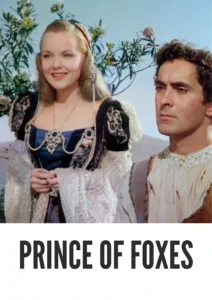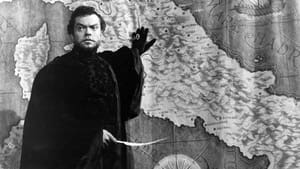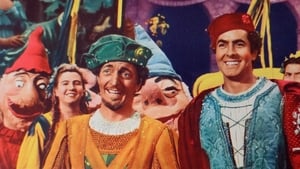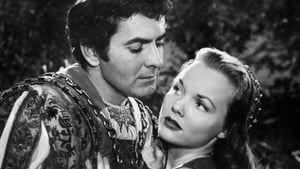Contact: info@alwanfilm.com
Video Sources 0 Views

Synopsis
Prince of Foxes 1949 Colorized Review: A Lavish Historical Adventure Reimagined in Color

Introduction
Prince of Foxes (1949), directed by Henry King, is a grand historical drama that transports audiences to the tumultuous world of Renaissance Italy. The film, based on Samuel Shellabarger’s best-selling novel of the same name, offers a rich tapestry of political intrigue, betrayal, and romance, all set against the backdrop of 16th-century Italy. Featuring iconic performances from Tyrone Power and Orson Welles, Prince of Foxes is a captivating example of classic Hollywood period filmmaking. In this article, we will explore how the film’s subsequent colorized version affects the viewing experience, delve into the performances and direction, and discuss the importance of Prince of Foxes within the context of both historical cinema and film colorization history.
Check The Full Colorized Movies List
Check Our Colorized Movies Trailer Channel
Understanding Prince of Foxes 1949 Colorized: Director, Cast, and Genre
Director’s Vision
Henry King, one of Hollywood’s most accomplished directors, was known for his ability to craft sweeping epics that balanced historical accuracy with emotional depth. With Prince of Foxes, King aimed to immerse viewers in the Machiavellian world of Renaissance Italy, filled with complex political machinations and moral ambiguity. His direction places a strong emphasis on visual storytelling, utilizing Italy’s stunning landscapes and historical architecture to create a film that is as much a feast for the eyes as it is a compelling narrative. King’s penchant for detailed period pieces is evident in every frame, making Prince of Foxes a standout among historical dramas of the era.
The Iconic Performance of Actors
The film boasts a stellar cast, led by Hollywood heartthrob Tyrone Power, who portrays the cunning and ambitious Andrea Orsini. Power was already a major star by the time Prince of Foxes was released, and his performance in the film showcases his ability to embody characters who are both morally complex and irresistibly charismatic. As Orsini, Power balances the character’s ambition with moments of genuine introspection, making him a relatable anti-hero in the dangerous world of Renaissance politics.
Opposite Power is the legendary Orson Welles, who delivers a towering performance as Cesare Borgia, one of the most notorious figures of the period. Welles’ portrayal of Borgia is both menacing and magnetic, capturing the ruthless ambition and cold intelligence that defined the historical figure. His presence looms large over the film, adding a layer of gravitas to the story’s political intrigue.
Other notable performances include Wanda Hendrix as Camilla Verano, who brings a sense of innocence and vulnerability to the role, and Everett Sloane as Mario Belli, Orsini’s loyal companion. Together, the cast delivers performances that elevate the film beyond a simple historical adventure, adding emotional depth and complexity to the narrative.
Exploring the Genre
Prince of Foxes is a quintessential example of the historical adventure genre, combining elements of romance, intrigue, and action to create a sweeping narrative. The film’s genre is rooted in the grand traditions of period films, with elaborate costumes, historical settings, and larger-than-life characters. However, Prince of Foxes also stands out for its darker, more complex take on the genre, offering a story that delves into the moral ambiguities of power and ambition. This mixture of spectacle and substance is what has allowed the film to endure as a classic of historical cinema.
Exploring the World of Prince of Foxes 1949 Colorized: Plot and Characters
Detailed Synopsis
Set in the early 16th century, Prince of Foxes follows the story of Andrea Orsini (Tyrone Power), a gifted artist, soldier, and diplomat who is in the service of the powerful and unscrupulous Cesare Borgia (Orson Welles). Orsini, while ambitious and willing to engage in political intrigue, begins to question his loyalty to Borgia as he becomes entangled in a plot to conquer the peaceful city-state of Città del Monte, ruled by the benevolent Count Verano (Felix Aylmer) and his young wife, Camilla (Wanda Hendrix).
As Orsini is sent to aid Borgia’s ambitions, he finds himself drawn to the noble Verano and the beautiful Camilla, leading him to reconsider his allegiance. The film’s narrative is driven by Orsini’s internal conflict, as he is forced to choose between his loyalty to Borgia and his newfound sense of honor and justice.
Key moments in the film include Orsini’s realization of Borgia’s ruthlessness, his growing affection for Camilla, and his eventual decision to betray Borgia in order to protect Città del Monte. The film’s climax features a dramatic confrontation between Orsini and Borgia, as Orsini ultimately chooses to fight for the principles he has come to believe in, rather than the power he once sought.
The supporting characters, including the scheming Mario Belli (Everett Sloane) and the courageous Count Verano, play pivotal roles in shaping Orsini’s journey from a self-serving opportunist to a man of conscience. Each character adds depth to the film’s exploration of loyalty, ambition, and the cost of power.
The Art of Film Colorization
Understanding the Process
Film colorization is the process of adding color to black-and-white films, and it has evolved significantly over the decades. In the case of Prince of Foxes, the original 1949 release was filmed in black-and-white, which was common for many films of the era due to budget constraints and the limitations of color technology. However, as colorization techniques improved, films like Prince of Foxes were revisited and transformed for a modern audience.
The process involves digitally adding colors to each frame of the film, a painstaking task that requires careful attention to historical accuracy and artistic intention. Colorists work to ensure that the added colors complement the original aesthetic, while also enhancing the visual appeal of the film.
Development Over Time
The development of film colorization has gone through several phases, from early hand-painted techniques to the advanced digital methods used today. In the early days of colorization, the results were often uneven, with colors appearing unnatural or overly vibrant. However, advancements in technology have allowed for more nuanced and realistic colorization, which can bring new life to classic films without compromising their original integrity.
Early Colored Films: A Brief History
Emergence of Early Colored Techniques
The journey toward full-color films began in the early 20th century with various experimental methods. Early techniques, such as tinting, involved adding color to specific parts of a film, while processes like Technicolor, introduced in the 1930s, revolutionized the industry by allowing for full-color films. These early color films captivated audiences, offering a new and exciting visual experience that went beyond the limitations of black-and-white.
By the time Prince of Foxes was released in 1949, Technicolor had become the dominant color process in Hollywood. However, due to the high cost of Technicolor, some films, including Prince of Foxes, were still shot in black-and-white. The subsequent colorization of these films allowed them to reach new audiences and be appreciated in a different light.
Prince of Foxes 1949 and Its Early Colored Version
The Decision to Release in Color
The decision to release a colorized version of Prince of Foxes was part of a broader trend in the 1980s and 1990s, when many classic black-and-white films were colorized to attract new viewers. For Prince of Foxes, colorization adds a layer of visual splendor that complements the film’s lavish sets, costumes, and landscapes. The Renaissance setting of the film, with its rich tapestries, ornate costumes, and sprawling castles, lends itself particularly well to color, making the colorized version a visually stunning experience.
Impact on the Visual Narrative
The colorized version of Prince of Foxes enhances the film’s visual storytelling by bringing out details that were less noticeable in the black-and-white version. The vibrant colors of Renaissance Italy come to life, drawing the audience deeper into the world of political intrigue and opulence. The colorization highlights the contrast between the dark, shadowy interiors of Borgia’s court and the bright, sunlit landscapes of Città del Monte, reinforcing the film’s themes of moral contrast and internal conflict.
However, the colorized version also raises questions about how it affects the original artistic intent. Some purists may argue that the film was designed to be seen in black and white, and that the addition of color detracts from the mood and tone that the filmmakers originally intended.
The Debate Over Film Colorization
Controversy Surrounding Colorization
The debate over film colorization has been ongoing since the process first gained popularity. Critics argue that colorization alters the original vision of the filmmakers and can diminish the artistic quality of the film. They believe that black-and-white cinematography has its own unique aesthetic, one that should not be tampered with.
On the other hand, supporters of colorization argue that it can make classic films more accessible to modern audiences, who may be less inclined to watch black-and-white films. By adding color, these films can reach new generations of viewers and continue to be appreciated for their storytelling and performances.
Examining Prince of Foxes 1949 as an Early Colored Film
Enhancement or Distraction?
For Prince of Foxes, the colorization adds a new dimension to the film’s already impressive visual design. The Renaissance setting, with its opulent costumes and grand architecture, is brought to life in vivid detail. The colorization enhances the film’s sense of place, making the political and romantic intrigue feel more immediate and engaging.
However, for some viewers, the colorization may be seen as a distraction from the film’s original artistic choices. The stark contrasts of light and shadow in the black-and-white version create a certain mood that may be softened by the addition of color. Ultimately, whether the colorized version is an enhancement or a distraction depends on the viewer’s perspective.
Influence and Legacy: Prince of Foxes 1949 Colorized’s Impact on Cinema
Influence on Historical Cinema
Prince of Foxes has had a lasting influence on the historical drama genre, particularly in its depiction of Renaissance intrigue and political maneuvering. The film set a standard for lavish period pieces, inspiring later films that sought to combine historical accuracy with compelling storytelling. Its success also helped to solidify Tyrone Power’s reputation as one of Hollywood’s leading men, while further cementing Orson Welles’ status as a master of cinematic villainy.
Legacy of Colorized Films
The colorized version of Prince of Foxes also holds a special place in the history of film colorization. As one of the more successful examples of the process, it demonstrates how colorization can breathe new life into classic films, making them accessible to contemporary audiences while sparking discussions about the preservation of cinematic history.
Director’s Cinematic Legacy: Beyond Prince of Foxes 1949 Colorized
Henry King’s legacy as a filmmaker extends far beyond Prince of Foxes. Known for his versatility, King directed films in a wide range of genres, from Westerns to war dramas to romantic comedies. His ability to tell compelling stories, combined with his attention to historical detail, made him one of the most respected directors of his time. Prince of Foxes stands as one of the highlights of his career, showcasing his skill at blending historical accuracy with emotional depth.
Themes Explored in Prince of Foxes 1949 Colorized
Darkness, Ambition, and Moral Choices
At its core, Prince of Foxes is a film about ambition, loyalty, and the moral choices that define a person’s character. Andrea Orsini’s journey from a self-serving political operative to a man of honor is a classic narrative arc, but it is rendered with depth and nuance thanks to the film’s exploration of power and corruption. The film also touches on themes of love and sacrifice, as Orsini’s affection for Camilla ultimately leads him to risk everything to protect her and the people of Città del Monte.
Reception and Controversy Surrounding Prince of Foxes 1949 Colorized
Critical Reception and Audience Reactions
Upon its release in 1949, Prince of Foxes was met with positive reviews from both critics and audiences. The film’s sweeping historical narrative, combined with strong performances from Tyrone Power and Orson Welles, made it a box office success. Critics praised Henry King’s direction and the film’s visual grandeur, while audiences were drawn to the intrigue and romance of Renaissance Italy.
The colorized version, however, has been more polarizing. While some appreciate the added visual appeal, others argue that the colorization detracts from the film’s original aesthetic. The controversy over colorization continues to fuel discussions about how best to preserve and present classic films for modern audiences.
Where to Watch Prince of Foxes 1949 Colorized Online
Prince of Foxes is available to stream on several platforms, including Amazon Prime Video and Apple TV. Both the original black-and-white version and the colorized edition can be found on DVD and Blu-ray, offering viewers the choice of experiencing the film in its original format or with the added layer of colorization. Some streaming services also offer both versions, giving audiences the opportunity to compare and contrast the two.
FAQs About Prince of Foxes 1949 Colorized
Q: Is the colorized version of Prince of Foxes faithful to the original?
A: While the colorized version of Prince of Foxes adds a new visual dimension, it remains faithful to the original story, performances, and direction. However, some viewers may feel that the addition of color alters the mood and tone of the film.
Q: Who plays Cesare Borgia in the film?
A: Cesare Borgia is portrayed by Orson Welles, whose performance as the ruthless and ambitious historical figure is one of the highlights of the film.
Q: What themes are explored in Prince of Foxes?
A: The film explores themes of ambition, loyalty, and moral choice, set against the backdrop of Renaissance political intrigue. It also touches on themes of love and sacrifice.
Q: How does the colorization impact the film?
A: The colorization enhances the visual appeal of Prince of Foxes, bringing the Renaissance setting to life in vivid detail. However, it also raises questions about how it affects the original artistic intent of the filmmakers.
Conclusion
Prince of Foxes (1949) remains a captivating example of classic Hollywood historical filmmaking. With its rich storytelling, complex characters, and stunning visuals, the film continues to resonate with audiences decades after its release. The colorized version offers a fresh perspective on the film, allowing viewers to experience its lavish Renaissance setting in vivid detail. However, the debate over colorization highlights the ongoing tension between preserving a film’s original artistic vision and making it accessible to new audiences. Whether viewed in its original black-and-white format or its colorized edition, Prince of Foxes remains a timeless tale of ambition, loyalty, and moral choice, set against the backdrop of one of history’s most fascinating periods.















